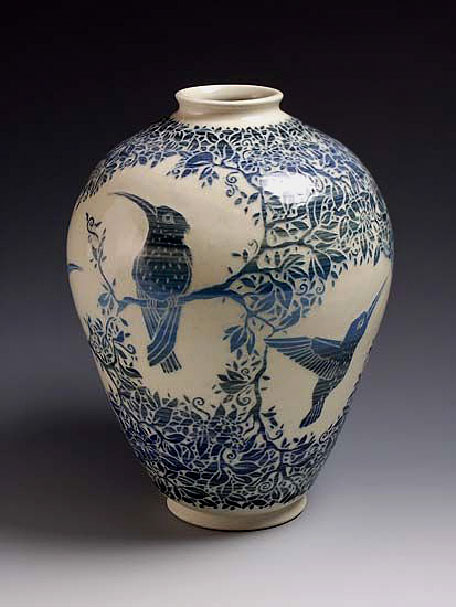What is Decorative Pottery?
Decorative pottery refers to ceramic pieces that are crafted primarily for aesthetic appeal rather than functional use. Each piece tells a story, showcasing the artisan’s unique style, cultural influences, and techniques. These decorative items range from vases and bowls to sculptures and wall hangings, making them versatile additions to any home decor.
History of Decorative Pottery
Ancient Beginnings
The practice of pottery dates back to ancient civilizations, where it served both practical and decorative purposes. The earliest known pottery is believed to have been created in East Asia around 20,000 B.C. Over the centuries, pottery evolved, influenced by cultural exchanges and innovations.
Regional Styles
Different regions developed their own unique styles of decorative pottery:
- Chinese Porcelain: Known for its beauty and durability, often featuring intricate blue and white designs.
- Mexican Talavera: Brightly colored pottery that reflects indigenous traditions.
- Italian Majolica: Hand-painted pieces known for their vibrant colors and complex patterns.
- Japanese Raku: Known for its unique firing techniques and earthy aesthetics.
Types of Decorative Pottery
Functional vs. Non-Functional Pottery
While some decorative pottery pieces can serve practical purposes, others are made purely for display. Understanding the differences can help you choose the right pieces for your collection or decor.
| Type | Characteristics | Usage |
|---|---|---|
| Functional Pottery | Durable, often glazed, made for everyday use | Tableware, cookware |
| Non-Functional Pottery | Primarily ornamental, unique designs | Display, art pieces |

Choosing the Right Decorative Pottery for Your Space
Decorative pottery can enhance your home’s aesthetic when chosen thoughtfully. Here are some tips and personal experiences to guide your selection:
1. Consider Your Space
Evaluate the style, color palette, and size of your room. For instance, a large, vibrant vase can act as a focal point in a minimalist space. In my living room, a large Talavera pot filled with dried flowers adds a pop of color that brings warmth to the environment.
2. Mix and Match Styles
Don’t be afraid to combine different pottery styles. Layering textures and colors can create a more dynamic look. In my dining area, I juxtapose rustic Raku bowls with sleek modern porcelain pieces, achieving a balanced yet exciting table setting.

3. Pay Attention to Scale
Make sure your pottery pieces are proportionate to your space. An oversized pot on a small shelf can overwhelm the area, while tiny pieces can get lost in a large room. When decorating my bookshelf, I ensured to alternate between small and medium pieces to maintain visual interest without clutter.
Care and Maintenance of Decorative Pottery
To keep your decorative pottery looking pristine, regular care is essential. Here are some tips:
Cleaning Tips
- Dust regularly with a microfiber cloth.
- For glazed pieces, use a gentle dish soap and water.
- Avoid abrasive cleaners that can scratch surfaces.
Storage Solutions
When not displayed, store pottery in a cushioned box or wrap it in soft cloth to prevent damage. In my collection, I utilize padded shelving to keep fragile pieces safe while still showcasing them.

Pros and Cons of Decorative Pottery
Pros
- Enhances aesthetic appeal of a space.
- Reflects personal style and cultural heritage.
- Diverse range of styles and types available.
Cons
- Can be fragile and prone to breakage.
- Some pieces may be expensive.
- Requires regular maintenance to keep in good condition.

Where to Buy Decorative Pottery
There are multiple avenues to explore when buying decorative pottery:
1. Online Retailers
Websites like Etsy, Wayfair, and Amazon offer a vast selection of pottery from various artisans and brands. Make sure to check customer reviews for insights on quality.
2. Local Artisans and Craft Fairs
Supporting local artisans not only helps the community but also gives you the chance to see and feel the quality of the pottery before purchasing. I often visit local craft fairs to discover unique pieces that tell a story.

3. Antique Shops and Thrift Stores
Searching through antique shops and thrift stores can lead to finding one-of-a-kind treasures. You never know what hidden gems you might uncover! My favorite decorative piece was found in a bustling thrift store and has become a conversation starter in my home.
FAQs about Decorative Pottery
What materials are commonly used in decorative pottery?
Common materials include stoneware, earthenware, porcelain, and terracotta. Each type has its own unique characteristics and aesthetic qualities.

How can I tell if pottery is handmade?
Look for imperfections such as uneven glazing or subtle variations in shape. Handmade pieces often have more character compared to mass-produced items.
Can decorative pottery be used outdoors?
Some decorative pottery can be used outdoors, but it’s essential to check if the material is weather-resistant. Many ceramic pieces may crack in cold temperatures.
How do I style decorative pottery in my home?
Consider grouping pieces by size or color, incorporating them on shelves, mantels, or tables. Layering with books, plants, or other decorative items can create an inviting display.